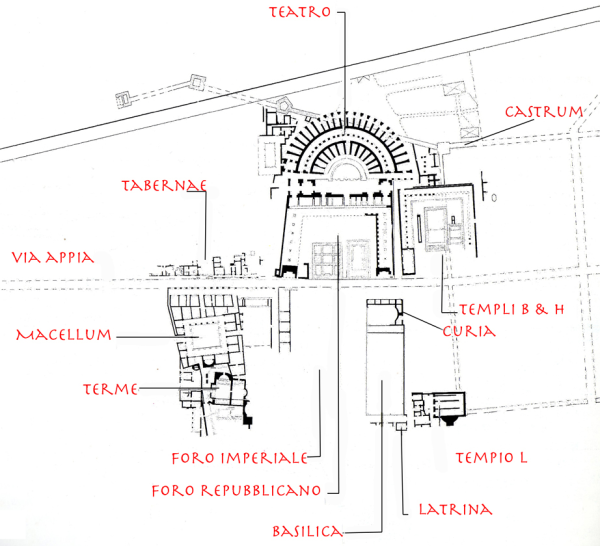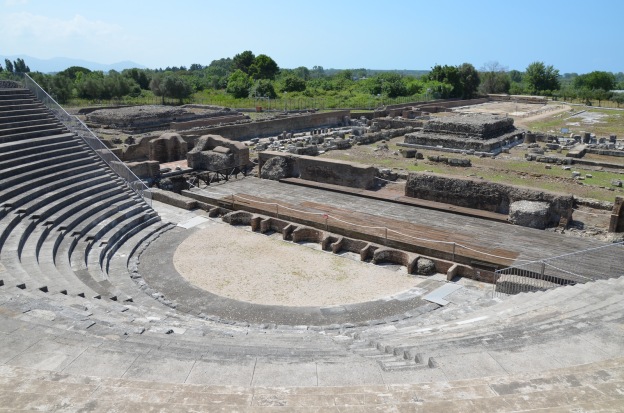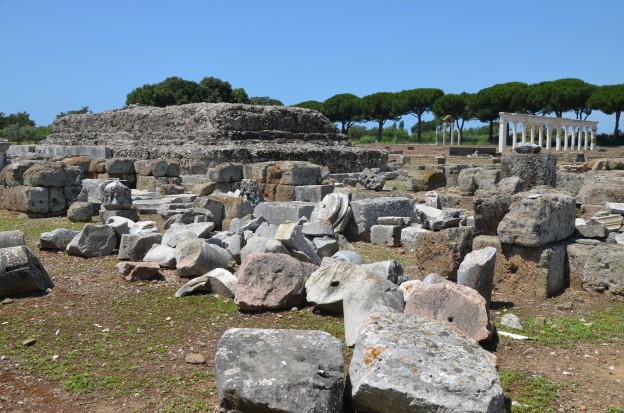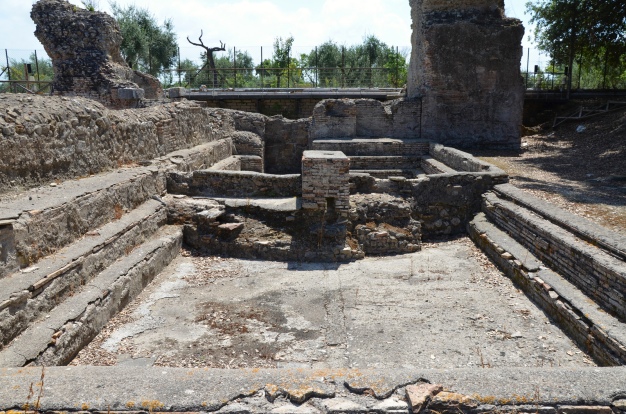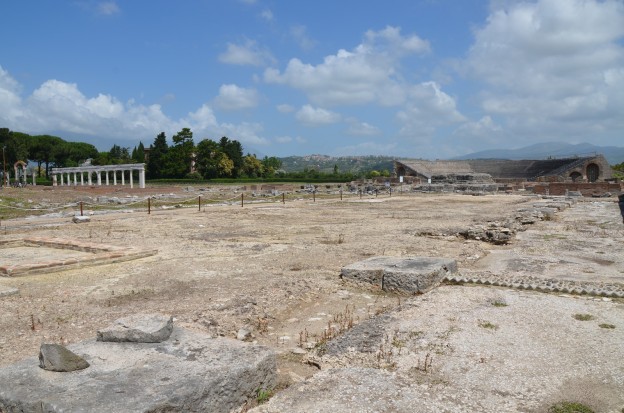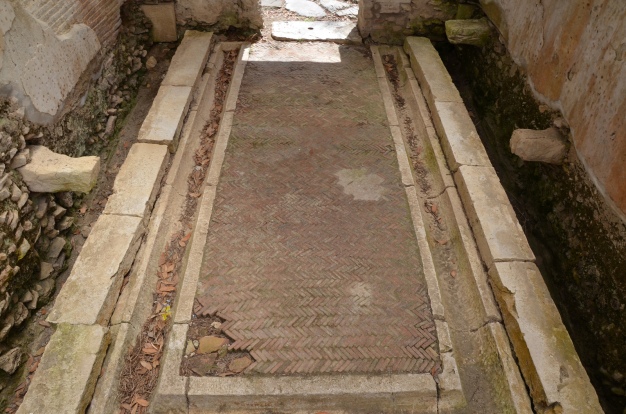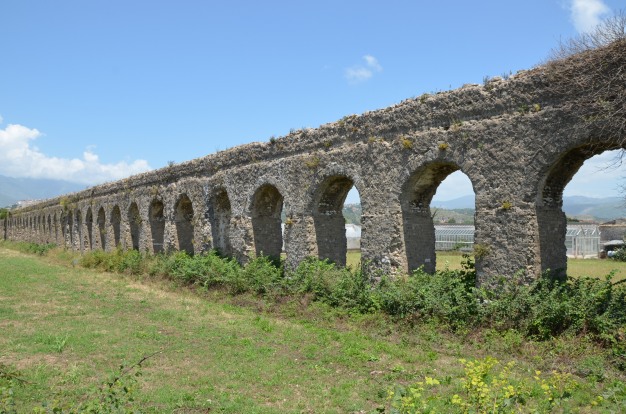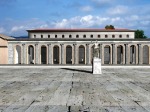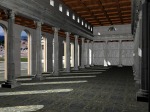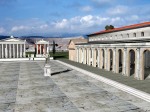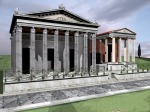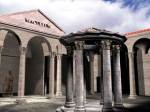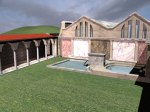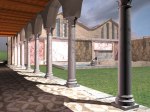On a recent trip to Italy, I visited the Archaeological Area of Minturnae, a little-known but impressive archaeological site along the Appian Way.
Minturnae was originally an Auruncian city (of which no archaeological traces have been found), one of the three towns of the Aurunci which allied themselves with the Samnites and made war against Rome in 314 BC. After being defeated by Rome the city suffered severe repression and was burned to the ground. The Romans settled in the area and built a castrum along the river Liris after realising the strategic and commercial importance of its close location to the sea.
The military settlement grew into a Roman colony in 296 BC and became an important trading port of the Mediterranean as well as a fortified commercial centre along the Appian Way.
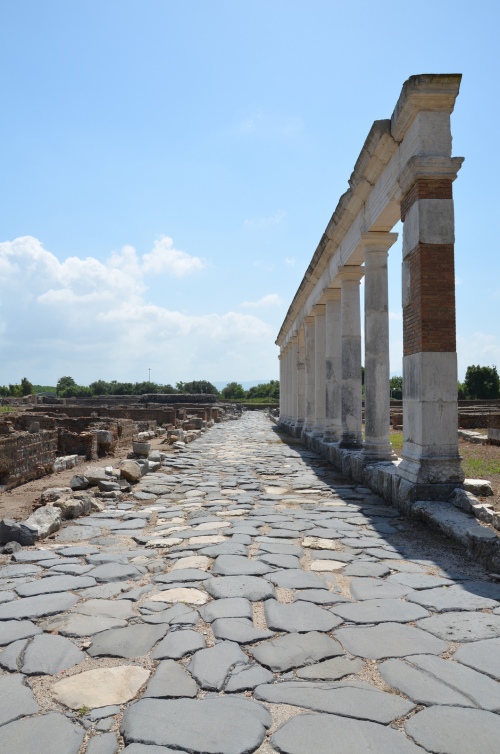
A stretch of the Appian Way passing through the ancient city and serving as its decumanus maximus, Minturnae © Carole Raddato
In the 1st century BC Minturnae was a flourishing city provided with a Capitolium (temple dedicated to the triad of Jupiter, Juno and Minerva), a forum and a theatre. During the Imperial era a new forum was built, surrounded by public buildings such as a Basilica, thermal baths, an amphitheatre and a macellum (market).
Today there are still significant Roman remains scattered on both sides of the Appian Way.
Map of Minturnae
On one side of the ancient road one finds the ancient theatre, the Republican forum, the Capitolium and the temple of Augustus.
Republican Forum & Theatre
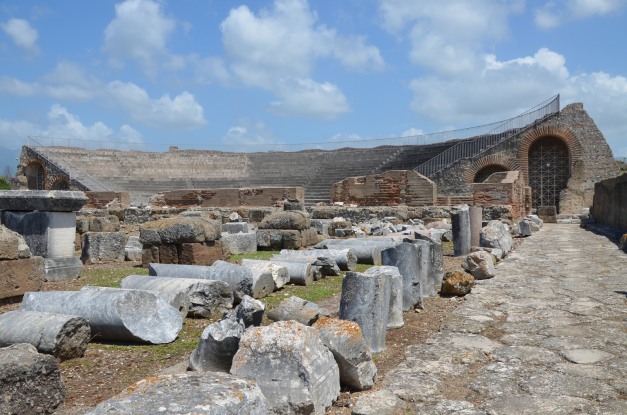
The Republican forum and the Roman theatre, built in the late Republican ear or at the beginning of the Empire, Minturnae © Carole Raddato
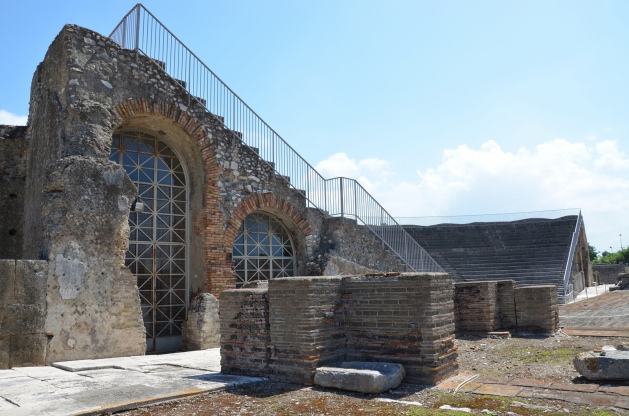
The Roman theatre, built in the late Republican ear or at the beginning of the Empire, Minturnae © Carole Raddato
The theatre, built during the reign of Augustus, had a capacity of 4,500. It underwent several restorations and reconstructions, the latest of which is thought to date to the 4th century AD. Statues from the scaenae frons have been recovered including one of Augustus and another of Livia. They are on display in the Antiquarium inside the theatre.
Temple of Augustus
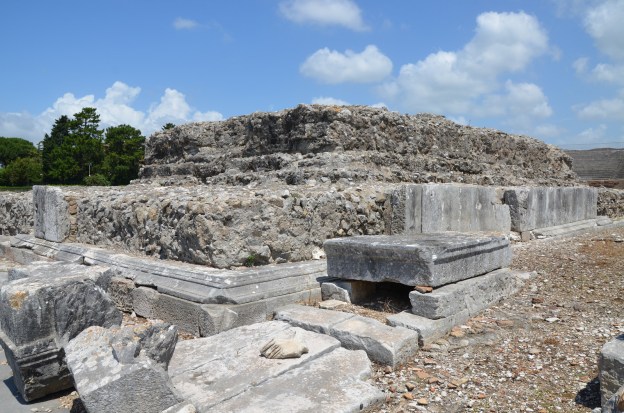
The podium of the Temple of Augustus, built at the beginning of the Imperial age right alongside the Capitolium, Minturnae © Carole Raddato
Capitolium
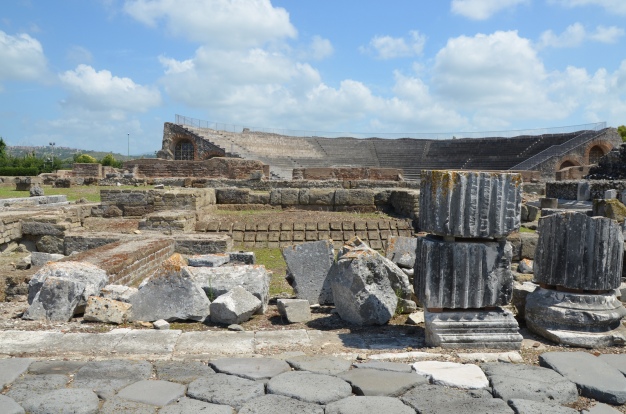
The ruins of the Capitolium (temple dedicated to the triad Jupiter, Juno and Minerva), an Etrusco-Italic type temple built ca. 191 BC, Minturnae © Carole Raddato
The Capitolium was an Etrusco-Italic type temple with three separate cella which was built soon after BC 191. It is located in the southern part of the Republican Forum and borders the Via Appia.
Republican Forum
On the other side of the Appian Way were the macellum (market), behind which was a large bathing complex, and the tabernae (room shops). Recent excavations have also revealed the Imperial forum which includes the Basilica, the Curia and the public latrines.
Macellum
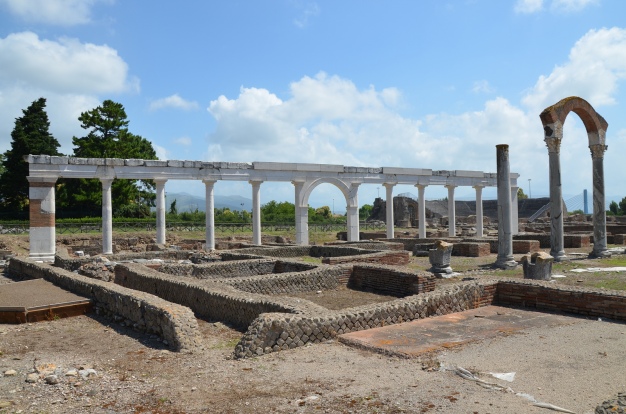
The macellum (market) and the tabernae dating to the Hadrianic period (117-138), Minturnae © Carole Raddato
The macellum was the emporium of the city where local and imported food poured into the nearby port. The building dates from the Hadrianic period with subsequent intervention during the Antonine era.
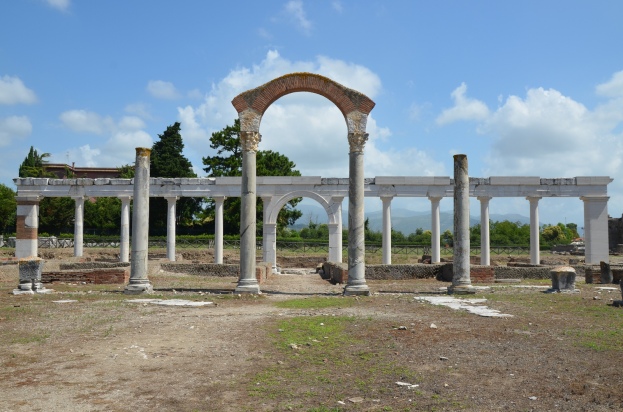
The macellum dating to the Hadrianic period (117-138) and the reconstructed monumental colonnade, Minturnae © Carole Raddato
Roman Baths
The bath complex developped behind the macellum. The examination of the building techniques let archaeologists think that the thermae may have been built during the reign of Hadrian. We can clearly see the caldarium and the tepidarium as well as the natatio (swimming pool) divided into two baths.
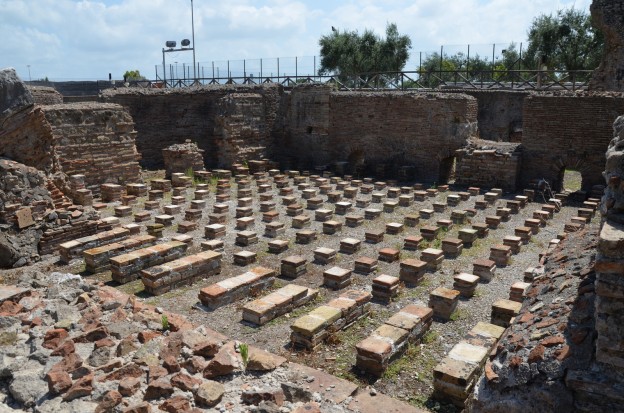
The tepidarium, the warm bathroom of the baths complex heated by a hypocaust (underfloor heating system), Minturnae © Carole Raddato
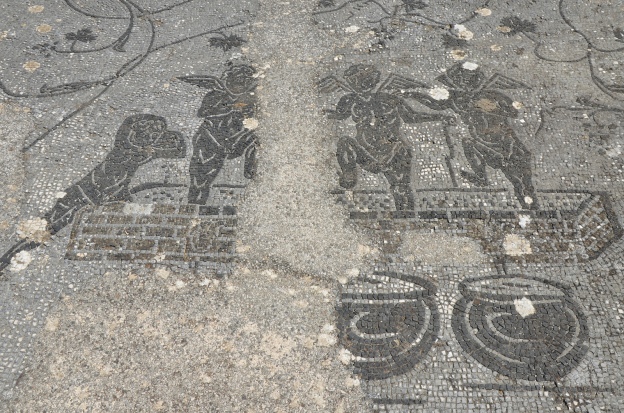
Black & white mosaic in the caldarium of the thermae depicting cupids pressing grapes, Minturnae © Carole Raddato
Imperial Forum
Opposite the Republican forum lays the Imperial forum. It is a big square paved in Coreno stone. On the eastern side of the forum stood the most representative buildings of the public life of the settlement: the Curia and the Basilica. The Basilica was built during the reign of Hadrian.
Minturnae Museum
A remarkable exhibition of archaeological materials, stone inscriptions and statues can also be seen in the Museum inside the ancient theatre.

Epigraph dedicated to Hadrian as Augustus and Pater Patriae (Father of the Country) attributed to Hadrian in 128 AD, Antiquarium of Minturnae
Aqueduct
Just outside the archaeological site, visitors can marvel at the 150 majestic arches of the very fine aqueduct. It was built between the end of the Republic and the beginning of the Empire in opus reticulatum. The aqueduct entered the city at the west gate bringing water from the Monti Aurunci 11 km away.
3D Reconstructions
3D reconstructions of the buildings of Minturnae done by the Istituto Tecnico Statale Costruzioni, Ambiente e Territorio Geometri di Formia can be seen online (website).
Further images of Minturnae can be viewed from my image collection on Flickr.
Source: Following Hadrian
